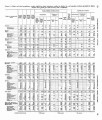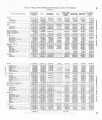| OCR Text |
Show 20 COMMISSIONER OF INDIAN AFFAIRS. \ IRRIGATION. The ever-increasing population of the United States and its ing exports correspondingly augment the requirements for €00 ductipn. These requirements demand that every acre of should be made to yield each year to the full extent gf its possibilities. Arid lands comwrise much of the vast area of our West and South-west, which in its original state was in most instances practically a , barren waste. and included a considerable area of Indian reservations. Much of this territory,-however, h,as been eliminated by the pro-gressive development of Indian irrigation projects, which, forcibly demonstrates the great advantage of artificial water 40 arid lands. Instances are recorded where such lands after reclamation have been enhanced in value $400 to $500 er acre, The most notable of our w r'oA ucts are those on the Yakima Reser-vation, in the State of 'Washington. The gross value of the crops raised during the year within the irrigation projects on this reserva-tion is $11,001,600, an increase over the previous year of $1,001,600. While the general condition and surroundings of our other projects are not quite so favorable as those of the Yakima Reservat~on. re-ports show corresponding increases throughout in crop productions. The irrigable area of the Wapato project on the Yakima Reserva-tion is about 120,000 acres. We have a secopized prior right of 720 second-feet of water for this division, which is sufficient to irrigate approximately 70,000 acres. It has been the desire of the Indian Service to secure from the Reclamation Service the perpetual use of 250,000 acre-feet of water annually in addition to the said 720 sec-ond- feet of water now appropriated to the Wapato division. With this end in view, an agreement was had with that service providing for the diversion of flood or storagewater in said amount during the irrigation season of each year, subject, of course., to prior existing rights. This agreement is of material benefit to this project. An agreement having been previously reached with the whiteland-owners in the Florence Casa Grande Valley as to a diversion of the ailab able water for irrigation purposes from the Gila =ver, and the work of signing up whit'e landowners desiring to come within this project having been complet*, the arduous task of selecting the lands.in white ownership, consisting of 27,000 acres, was taken up. The lands owned by those person? having subsisting water rights were given preference. The next in order were those persons own-ing lands who were members of the Casa Grande Water Users' As-sociation in good standing. These two classes of persons completely exhausted the available area. There are 35,000 acres of land within the Gila Indian Reservation which comes within this project, making ~, a total area of 62,000 acres which will be benefited by the project. Advertisements were issued looking to the construction of the di-version dam under contract, but no satisfactory bids were received, those submitted being on a cost-plus or fixed-fee basis. Our ap-propriations for this work being limited and these bids c a r r ~ n gno assurance that the total cost would not greatly exceed the limit placed thereon by Congress, namely, $250,000, it was npb deemed ad-visable to accept any of the offers. Due to these conditions and the fact that the two-year period within which the construction should hegin would expire on May 1, 1921, it was decided on January 3, |









































































